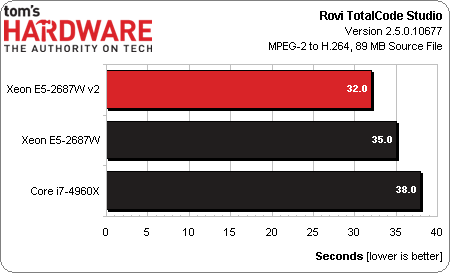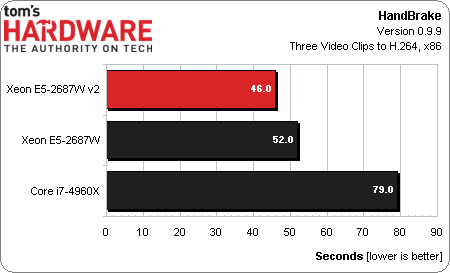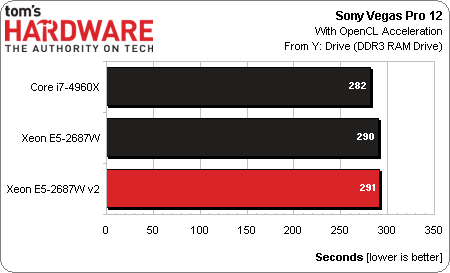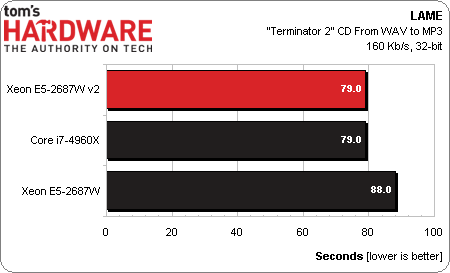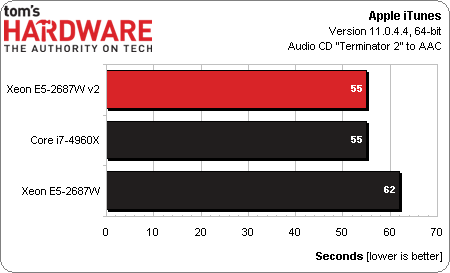Intel Xeon E5-2600 v2: More Cores, Cache, And Better Efficiency
Intel recently launched its Xeon E5-2600 v2 CPU, based on the Ivy Bridge-EP architecture. We got a couple of workstation-specific -2687W v2 processors with eight cores and 25 MB of L3 cache each, and are comparing them to previous-generation -2687Ws.
Results: Media Encoding
Rovi’s TotalCode Studio certainly doesn’t scale according to core count or cost. However, two Xeon E5-2687W v2 CPUs are quicker than last generation’s Xeon E5-2687Ws, which are in turn faster than a single Core i7-4960X. Because the gains are so small, though, you probably won’t rush to add cores if you’re encoding video with TotalCode.
Converting video clips to H.264 in HandBrake scales far better. This is particularly interesting because HandBrake employs the x264 encoder, which is really well-optimized for many-core CPUs. Beyond that, there are builds of HandBrake that support Intel’s Quick Sync technology and OpenCL (which offloads cropping and down-scaling to GPUs).
Also, we know from our early work with x265 (Next-Gen Video Encoding: x265 Tackles HEVC/H.265) that next-gen encoders are going to be very performance-hungry as they facilitate higher quality at the same bit rates or the same quality at lower bit rates compared to H.264. When quality necessitates a software encoder, expect the very fastest host processors to deliver the best experience.
Like Photoshop, Sony Vegas uses OpenCL acceleration to speed up this workload. Our Quadro FX 1800 sits around 82% utilization, while IA cores hover under 25% on the Core i7. And also like Photoshop, performance doesn’t improve on a platform with more cores. Instead, the Core i7 is fastest, while the Xeon setups essentially tie.
LAME and iTunes, both single-threaded metrics, reflect the same thing: Ivy Bridge at high clock rates is quicker than Sandy Bridge at lower frequencies. Much of this is owed to Intel’s transition from 32 to 22 nm manufacturing, facilitating more aggressive settings within the same thermal envelope.
Get Tom's Hardware's best news and in-depth reviews, straight to your inbox.
